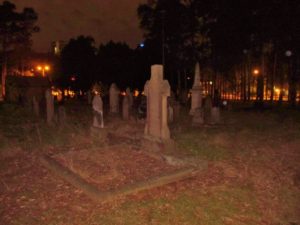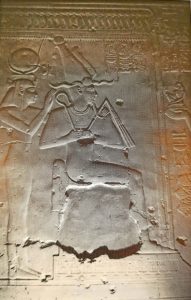As a result of many thousands of years of medical advancement, causes of death are much better understood today than they were in the past. Without this knowledge, ancient cultures had to make their own deductions in order to understand what causes death. Archaeological evidence suggests that Neanderthals understood death as an invisible enemy and that this belief may have survived into Ancient Egyptian culture. This post will discuss the similarities in beliefs between these two cultures.
Burying the dead is an ancient practice which can be traced as far back as Palaeolithic times. It is speculated that these people buried their dead for two reasons (Brandon 1961):
- The sight of a corpse may have been distressing so they applied the ‘out of sight, out of mind’ principle.
- They thought burial would preserve the corpse so that it may survive and reanimate either in this life or the next.

There is evidence to support the latter theory in particular as Palaeolithic graves have been known to include food and other ornaments and implements that the deceased was likely to have used in life (Brandon 1966). This suggests that belief in an afterlife can be traced as far back as Neanderthal times more than 40 000 years ago. The belief in the afterlife may have stemmed from prehistoric theories of what caused death.
If someone died by violence, their cause of death was obvious. Conversely, if someone’s death was caused by disease, Neanderthal man was unlikely to have the technology or knowledge to understand the cause (Brandon 1961). As such, they may have theorised about an invisible assailant who caused the death. This belief personifies death and may have led to superstitions and beliefs for how death could be repelled or remedied. If death was viewed as a misfortune rather than a natural part of life, then it makes sense that the deceased would be buried with useful items in life so that if their death was remedied, they could return to their normal duties.
Egyptologists have uncovered evidence which suggest that Ancient Egyptians held similar beliefs about death. The earliest Egyptian mortuary texts are called the Pyramid Texts and they say that there once was a time when there was no death (Brandon 1961). This suggests that Ancient Egyptians believed that life was meant to last forever and that death a misfortune rather than one’s fate (Brandon 1961; Bandon 1966). This notion is supported by the fact that the word ‘to die’ mwt, is represented by the determinative sign of a man falling to his knees with blood streaming from his head. This image is also the determinative sign for the word hfty which means enemy. This may be because Ancient Egyptians, like Paleolithic man, personified death was an invisible enemy who killed out of malice (Brandon 1966). If this enemy could be defended against, then life could continue eternally. Further evidence for this theory comes from one of the prayers in the Coffin Texts reads ‘do not seize me, do not catch me, do not against me your intent’ (Brandon 1966). This reading suggests that death is a person who has the will and ability to perform these acts.
Finally, the theory of the personification of death as an enemy is supported by the legend of Osiris and Seth (Brandon 1961). Historical texts say that in the Golden Age of Egypt, the gods ruled the world with Osiris having dominion over Egypt (Ikram 2003). Osiris’s brother Seth was jealous of his rule and plotted to usurp him.
Seth constructed a richly decorated chest which was made specifically to Osiris’s measurements, and said that the chest would be a gift to anyone who could fit into it. Many people tried to fit into the chest, but could not. When Osiris tried to fit into the chest, he did so perfectly. Little did he know it had been constructed just for him. Seth slammed the lid down on the chest (which was the first coffin) and then threw it into the Nile. Isis, the wife and sister of Osiris, found her husband and returned him to Egypt (Ikran 2003).

Image credit: Salima Ikram
Seth, determined to maintain his newly established rule over Egypt, butchered Orisis and scattered his body across Egypt. Isis and her sister Nepthys found the body parts, reassembled them and resurrected Orisis who had now become the first mummy. Isis and Osiris had a son named Horus who later overthrew Seth thus restoring order to Egypt (Ikran 2003). Osiris then became the God of the Underworld and funeral rites and Seth became the God of desserts, storms and chaos.
In this story, there is nothing natural about Osiris’s death: he is murdered by an enemy. Had be been fortunate enough to evade his enemy, his life could have continued indefinitely. This is similar to how death may have been perceived by Neanderthal man. Furthermore, Osiris was resurrected with the help of Isis and Nepthys who bandaged the pieces of his body back together, thus creating the first mummy. This would suggest that Ancient Egyptians believed that they too, could be brought back from the dead if their body was treated in the same way as Osiris’s. This is likely to have been the start of the practice of mummification.
Although the above is a theory and not a conclusive finding, it does seem plausible that separate ancient cultures reached similar conclusions. We are all human after all and have the same five senses and capacity for reasoning. If you have any other theories about how death was conceptualised in ancient cultures, please let us know in the comment section below.
Bibliography
Brandon, SGF 1961, ‘The personification of death in some ancient religions’, Bulletin of the John Rylands Library, vol. 43, no. 2, pp. 317-335, Free E-Journals, University of Manchester Library
Brandon, SGF 1966, ‘The origin of Death in Some Near Eastern Religions’, Religious Studies, vol. 1, no. 2, pp. 217-228, JSTOR Arts and Sciences V
Ikram, S 2003, Death and Burial in Ancient Egypt, Pearson Education Limited, London
